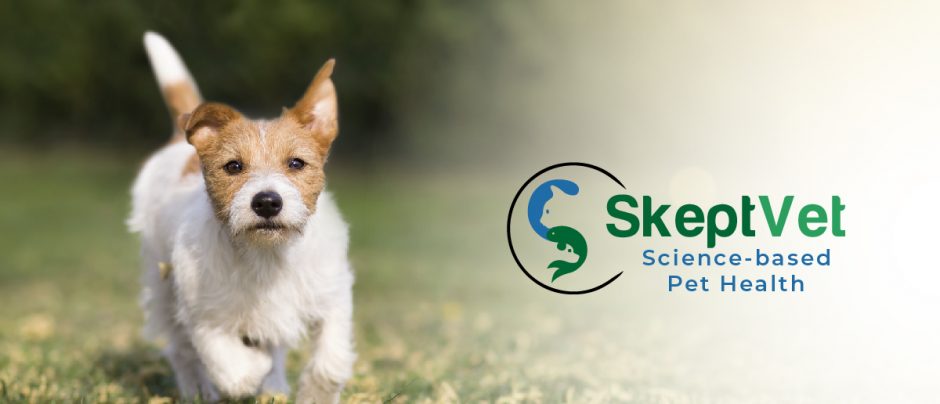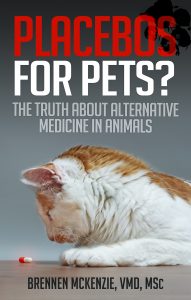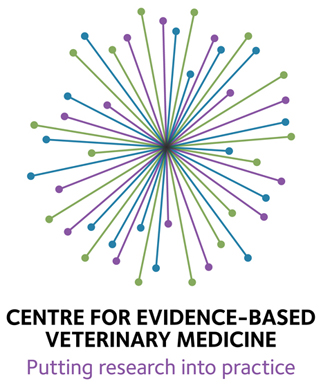Call it coincidence, confirmation bias, or a trend, but I once again ran into the issue of a specialist I refer to recommending a questionable therapy for one of my patients. I recently diagnosed a dog with a nasal cancer and sent him to a board-certified oncologist to consult of options for advanced therapy. The particular disease can’t be cured, but radiation and chemotherapy can have some symptomatic benefit and may prolong a reasonable quality of life. The owner, however, didn’t feel the possible benefits justified the risks and costs, which I think was a reasonable decision. So the oncologist was only able to offer minimal symptomatic care. He offered a non-steroidal anti-inflammatory for pain, and also told the owner to go to a human herbal remedy shop and find the Chinese herbal preparation yunnan paiyao to help with the intermittent nosebleeds the cancer was causing.
I expect specialists to be more cognizant of the need for evidence-based practice than general practitioners, but I am beginning to doubt the truth of this assumption. I accept that sometimes, when there is a compelling need to treat and no established effective treatment available or acceptable to the owner, it may be appropriate to try things that have a weak basis in basic or clinical evidence. However, I am still concerned about the wisdom of recommending therapies that we don’t have at least some reasonable evidence are safe or effective.
Absence of evidence is not, of course, proof something doesn’t work. But it is absence of any good reason to think it does. And the reverse is true for safety. Absence of evidence of harm does not mean it isn’t harmful, only that we don’t know whether it is or not. Yet anecdotal experience is used to justify both safety and efficacy despite the clear evidence of history that this isn’t reliable. Of course, this logic is preferentially applied to CAM therapies. If clinical testing of a pharmaceutical company medicine finds no significant side effects, and then rare harm does appear once the drug is in widespread use, this is trumpeted as a failure of the whole scientific testing paradigm and proof of the evil venality of drug companies and the innately poisonous nature of their products. Yet we seem very comfortable prescribing herbal products about which almost nothing is known concerning safety or efficacy, with the assumption that they must be safe and that even if the only evidence they work is anecdotal at least we they can’t do any harm.
So what is yunnan paiyao, and what is the evidence for or against it? It is an herbal concoction apparently invented in China in the early 20th century, and the details of the ingredients are still kept secret. However, it is widely considered to consist primarily of Panax notoginseng of pseudoginseng root, with a number of other possible plant ingredients. Right away I wonder at the wisdom of prescribing a remedy when no one knows exactly what is in it. Can you imagine a major pharmaceutical company getting away with selling a drug that doctors actually prescribed without disclosing the actual ingredients?! And given the well-documented problem of heavy metal and pharmaceutical contamination of Chinese herbal remedies, and the general inconsistency of such preparations, it is remarkable that any doctor, much less a boarded specialist, would feel comfortable assuming the safety of such a product based on personal experience and anecdotes.
There have been a few papers published in China and in some alternative medicine publications that show the substance has some influence on platelet aggregation, an important step in blood clotting. However, you can mix sand or many other substances in a test tube with platelets and they will activate. One of the reasons it is so hard to make a safe artificial heart is that it’s tough to find substances that don’t trigger platelet aggregation. Some studies have compared the effect of yunnan paiyao with wheat flour or other substances to show it is more likely to cause clotting than these others, but the reliability of the tests and the choice of substances doesn’t make a very convincing case. And we have to remember the problem with the reliability of different sources of published research. Publication bias (the publishing of only positive results and “round-filing” of negative studies) is a problem everywhere. But Chinese journals almost never publish negative studies, and CAM journals are especially prone to select only those papers for publication that support the kinds of therapies the journals were started to promote.
The same issue arises in considering the few clinical trials in humans. A small number of trials with a small number of patients conducted and/or published in low reliability sources might be enough to justify further research, but not to justify widespread clinical use of the product. And, of course, the testimonials and anecdotes of clinicians and users have the same lack of reliability. If the product has been in use for over 100 years, and in that time we have only a handful of small studies of it, I think that is fair reason to be skeptical. If the drug truly has a dramatic impact on bleeding, topically or orally, it shouldn’t be difficult to conduct and publish a well-designed trial for a mainstream journal. Even one such trial would doubtless excite enough interest, through NCCAM or private industry, to stimulate more. Whether this has never been done because the proponents of such therapies don’t see the need for such evidence, or because the drug doesn’t truly have enough promise to survive such a test, is an open question.
Finally, I have found only two published veterinary trials investigating yunnan paiyao. An abstract presented at the 2002 International Veterinary Emergency and Critical Care Symposium took a group of 6 healthy ponies, and anesthetized them twice to check activated clotting time (ACT) and template bleeding time (TBT). The ACT is a moderately reliable test of blood clotting, though it can be affected by temperature, how vigorously and consistently the test tube is shaken, and a number of other factors. The TBT is a much less reliable and more subjective test in which a lancet is used to cut the patient (usually on the oral mucosa) and the time it takes for the cut to stop bleeding is measured.
The only difference reported in methods between the control trial and the yunnan paiyao trial was the position of the patients. They were on their side in the control trial and on their back in the test trial. I wonder if this might affect TBT since the blood flow to different parts of the body is affected by body position, but there isn’t any information in the abstract to determine if this is a factor. The study reported no difference in the ACT value with or without the yunnan paiyao but did report a non-chance difference in the TBT.
The other trial was a placebo-controlled trial of yunnan paiyao and another herbal preparation called Single Immortal using five Thoroughbred horses. The horses were run on a treadmill after having received either one of the herbal preparations or the placebo (cornstarch) orally twice a day for 3 days before the experiment. A number of variables were measured, with the main goal to see if there was any effect on exercised-induced pulmonary hemorrhage (EIPH), bleeding in the lungs during exercise. No effect of either remedy on EIPH was seen.
So we have a treatment with uncertain and unregulated ingredients, no demonstrated plausible mechanism of action, a few in vitro and lab animal studies in journals of questionable reliability, a few small human clinical trials in similarly questionable sources, and two very small veterinary trials in equids which found no effect except possibly on a poorly reliable and subjective test of blood clotting. At the same time, we have almost no published reports of adverse effects. There is one case report in a Chinese journal of a contact dermatitis reaction and some suggestion that high doses or chronic use may affect bone marrow cells. And we have a well-established history of toxic contamination and poor quality control in Chinese herbal remedies in general.
For me, this information clearly shows the oncologist’s use of this preparation in my patient to me essentially an uncontrolled experiment with no reasonable assurance of safety or efficacy. It is disturbing to me and certainly shakes my confidence in the judgment and recommendations of this particular specialist, though I fear he may not be at all exceptional but simply part of a larger phenomenon in which anecdote, personal experience, and “expert” opinion is given undue weight and the need for more reliable evidence is underestimated in veterinary medicine.
References:
Epp TS, McDonough P, Padilla DJ, et al. The effect of herbal supplementation on the severity of exercise-induced pulmonary haemorrhage. Equine and Comparative Exercise Physiology 2005;2:17-25.
Graham L. Yunnan Paiyao–Where’s the clinical evidence? Veterinary Botanical Medicine Association Symposium Archive 2005. Available at: http://www.vin.com/Members/proceedings/Proceedings.plx?CID=VBMA&PID=13730&Print=1&O=VIN
Graham L, Farnsworth K, Cary J. The effect of yunnan baiyao on the template bleeding time and activated clotting time in healthy halothane anesthetized ponies. Proceedings International Veterinary Emergency and Critical Care Symposium 2002, San Antonio, TX. Journal of Veterinary Emergency and Critical Care 2002;12(4):279. Abstract only.
Robinson N. Yunnan Paiyao; The following references come from Dr. Robinson’s document:
1 Bergner P. Panax notoginseng Yunnan bai yao): A must for the first aid kit. Medical Herbalism. 10-31-94 6(3):12.
2 Fratkin J. Chinese Herbal Patent Formulas – A Practical Guide. Santa Fe: Shya Publications, 1986. P. 133.
3 Fratkin J. Chinese Herbal Patent Formulas – A Practical Guide. Santa Fe: Shya Publications, 1986. P. 133.
4 Zheng YN et al. Comparative analysis of the anti-haemorrhagic principle in ginseng plants. Acta Agriculturae Universitatis Jilinesis. 1989;11(1):24-27, 102. [Article in Chinese].
5 Jin H, Cui XM, Zhu Y, et al. Effects of meteorological conditions on the quality of radix Notoginseng. Southwest China Journal of Agricultural Sciences. 2005;18(6):825-828.
6 Fan C, Song J, and White CM. A comparison of the hemostatic effects of notoginseng and Yun Nan Bai Yao to placebo control. Journal of Herbal Pharmacotherapy. 2005;5(2):1-5.
7 Fratkin J. Chinese Herbal Patent Formulas – A Practical Guide. Santa Fe: Shya Publications, 1986. P. 133.
8 Liu Y, Xie M-X, Kang J, et al. Studies on the interaction of total saponins of panax notoginseng and human serum albumin by Fourier transform infrared spectroscopy. Spectrochimica Acta. Part A. 2003;59:2747-2758.
9 Chan RYK, Chen W-F, Dong A, et al. Estrogen-like activity of ginsenoside Rg1 derived from Panax notoginseng. Journal of Clinical Endocrinology and Metabolism. 2002;87(8):3691-3695.
10 Cicero AFG, Vitale G, Savino G, et al. Panax notoginseng (Burk.) effects on fibrinogen and lipid plasma level in rats fed on a high-fat diet. Phytotherapy Reearch. 2003;17:174-178.
11 Epp TS, McDonough P, Padilla DJ, et al. The effect of herbal supplementation on the severity of exercise-induced pulmonary haemorrhage. Equine and Comparative Exercise Physiology. 2004;2(1):17-25.
12 Chung VQ, Tattersall M, and Cheung HTA. Interactions of a herbal combination that inhibits growth of prostate cancer cells. Cancer Chemotherapy and Pharmcology. 2004;53:384-390.
13 Chen FD, Wu MC, Wang HE, et al. Sensitization of a tumor, but not normal tissue, to the cytotoxic effect of ionizing radiation using Panax notoginseng extract. American Journal of Chinese Medicine. 2001;29(3/4): 517-524.
14 Chen FD, Wu MC, Wang HE, et al. Sensitization of a tumor, but not normal tissue, to the cytotoxic effect of ionizing radiation using Panax notoginseng extract. American Journal of Chinese Medicine. 2001;29(3/4): 517-524.
15 Leung KS-Y, Chan K, Chan C-L, et al. Systematic evaluation of organochlorine pesticide residues in Chinese materia medica. Phytotherapy Research. 2005;19:514-518.
16 Leung KS-Y, Chan K, Chan C-L, et al. Systematic evaluation of organochlorine pesticide residues in Chinese materia medica. Phytotherapy Research. 2005;19:514-518.
17 Leung KS-Y, Chan K, Chan C-L, et al. Systematic evaluation of organochlorine pesticide residues in Chinese materia medica. Phytotherapy Research. 2005;19:514-518.
18 Leung KS-Y, Chan K, Chan C-L, et al. Systematic evaluation of organochlorine pesticide residues in Chinese materia medica. Phytotherapy Research. 2005;19:514-518










